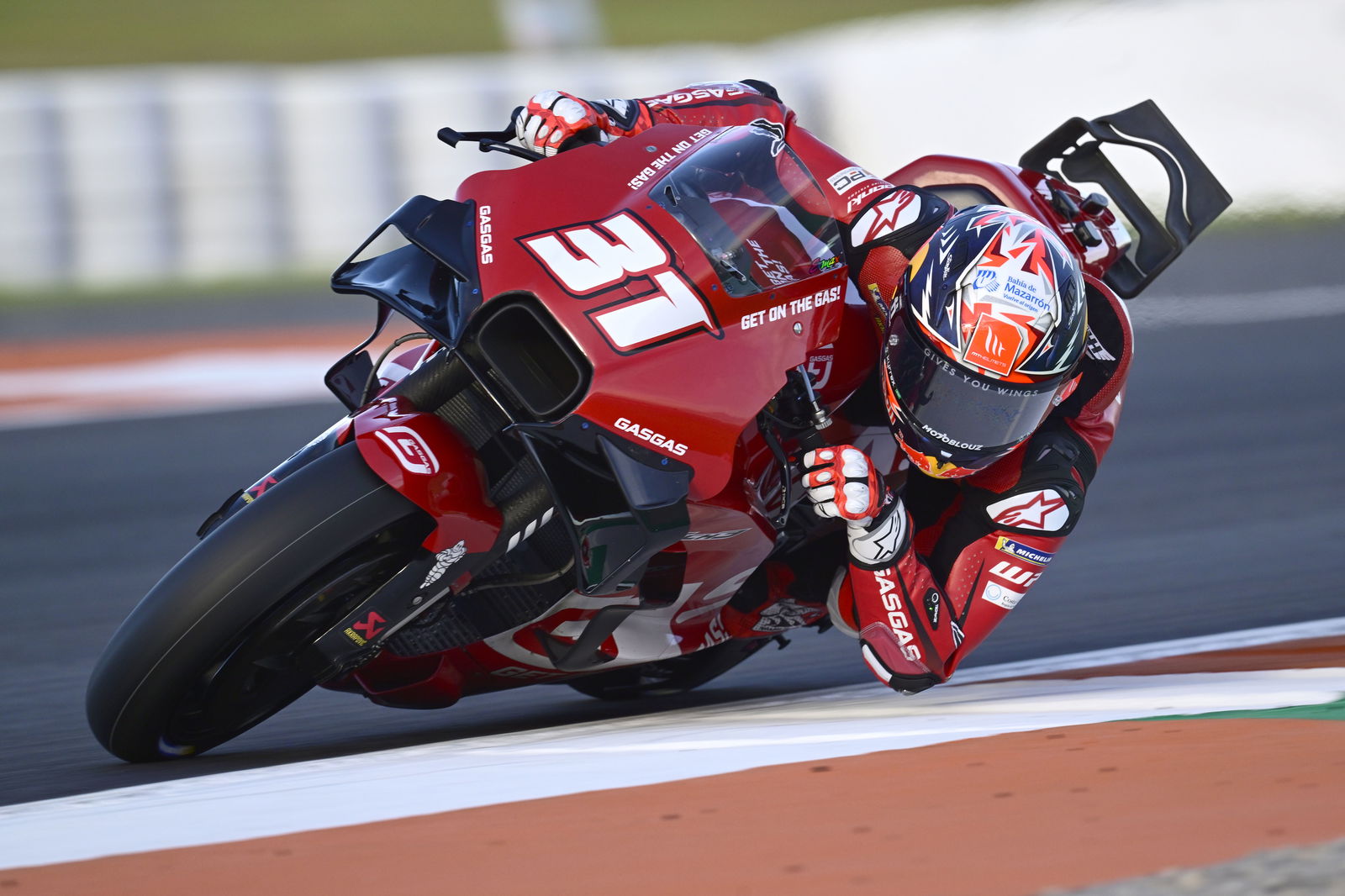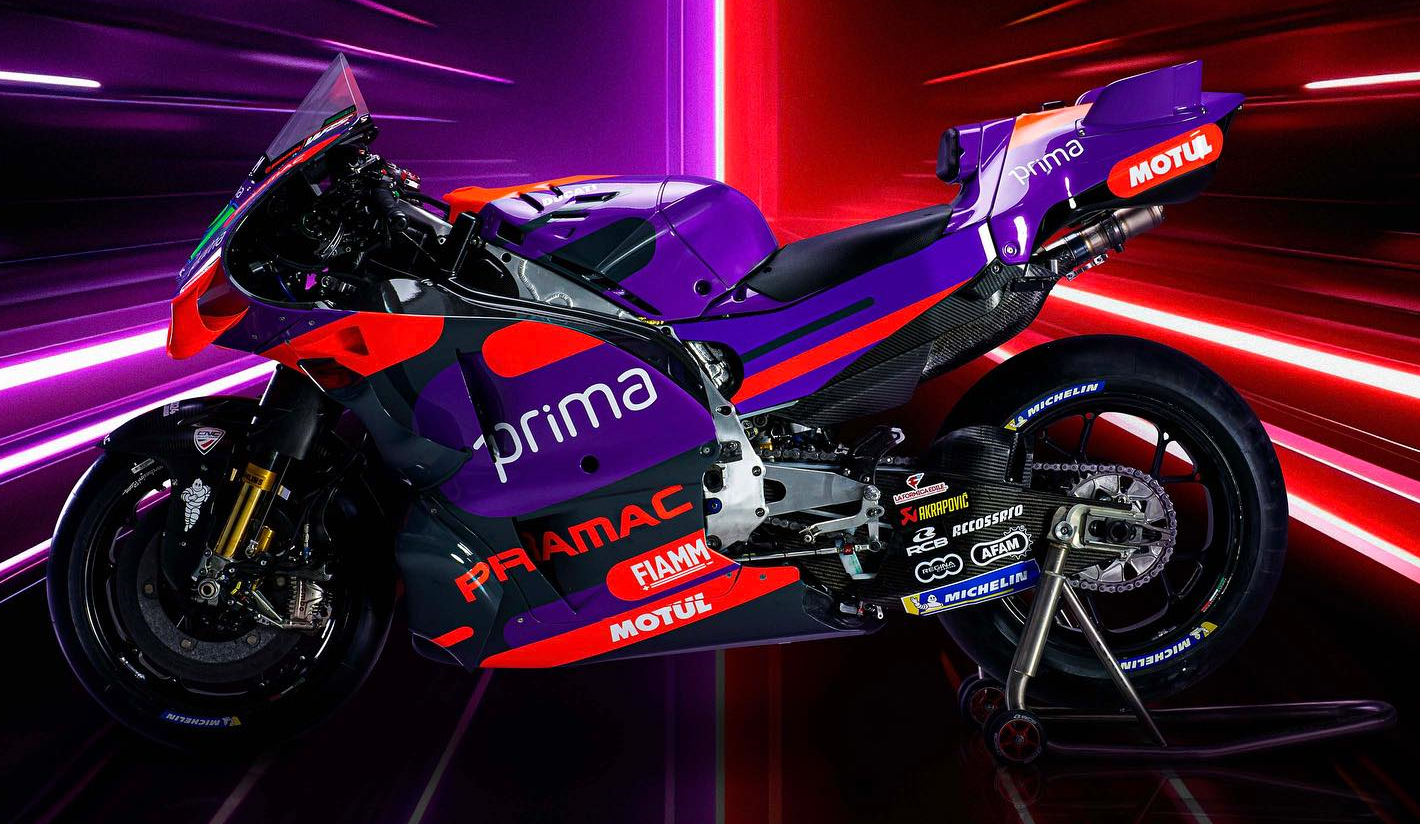The 5 most important moments in 75 years of MotoGP
MotoGP celebrates its 75th anniversary in 2024, and over the years there have been some colossal moments - here are the five most important

The Motorcycle World Championship was born just under 75 years ago in June 1949, and here are what we think are the five most important moments as MotoGP approaches its 75th birthday.
There have been some spectacular moments in the history of MotoGP, from Kevin Schwantz’ famous Hockenheim dive bomb on Wayne Rainey to Hans Spaan punching Fausto Gresini mid-race in the 1990 125cc Australian Grand Prix, and from Loris Capirossi cleaning out Tetsuya Harada in Argentina for the 1998 250cc title to Marc Marquez’ first MotoGP win in his second ever race.

Spoiler - none of those four moments made our five-strong list of the most important moments in the history of the Motorcycle World Championship, but in reality condensing 75 years of history and over 1,000 races into five points is guaranteed to lead to injustice on the part of those moments left out. But, anyway, here we go.
Just for the sake of avoiding pointless arguments, these are ranked chronologically, not in terms of their perceived quality or importance relative to one another.
The beginning: 1949 Isle of Man TT
What better place to start than the beginning? Well, not the absolute beginning, but at least the beginning of the Motorcycle World Championship, and that happened on the Isle of Man in 1949.
The World Championship may have diverged in the past 50 years over safety grounds, but the fact will forever remain that World Championship GP motorcycle racing was born not with a Grand Prix, but with a Tourist Trophy on the Isle of Man.
It was over 40 years before that the TT ran its first motorcycle race in 1907, but its hosting of the first World Championship race set it on a path to diverging from Grand Prix racing after 1978, when it hosted a round of the World Championship for the final time, as the growing safety movement in the GP scene effectively outlawed the famous road race from the World Championship.
The 1949 TT featured three classes: 250cc, 350cc, and 500cc, with the races labelled ‘Lightweight TT’, ‘Junior TT’, and ‘Senior TT’ respectively. Britain’s Freddie Frith won the Junior TT, Ireland’s Manliff Barrington the Lightweight TT, and the Senior was won by Harold Daniell, who also finished fourth in the Junior race.
The MotoGP of the early-to-mid-2020s would be almost unrecognisable against those original World Championship races, and yet it was they that laid the foundations for the series we enjoy now.
Honda’s first victory: 1961 125cc Spanish Grand Prix
Honda entered the World Championship in 1960, just over a decade on from its formation as Honda Motor Company in post-war Japan. Its success in its first year was limited, but Honda's arrival would nonetheless signal the beginning of the end for the first period of European dominance in Grand Prix racing.
It was not until the 125cc Spanish Grand Prix in 1961 that Honda would claim its first victory, courtesy on that occasion of the Australian Tom Phillis, who went on to win that year’s 125cc World Championship. This victory proved the level of Honda, and that Japanese manufacturers could beat the Europeans even in a championship which revolved around European circuits and Europe-based riders.
The next race in Germany saw Honda make more history, as it became the first Japanese manufacturer to win a 250cc Grand Prix, and Kunimitsu Takahashi became the first Japanese rider to win a World Championship Grand Prix in the process.
By the end of the century, Honda would be dominating the 250cc class with another Japanese rider, who on this occasion would go on to be remembered as arguably the greatest intermediate class rider of all time: Daijiro Kato.
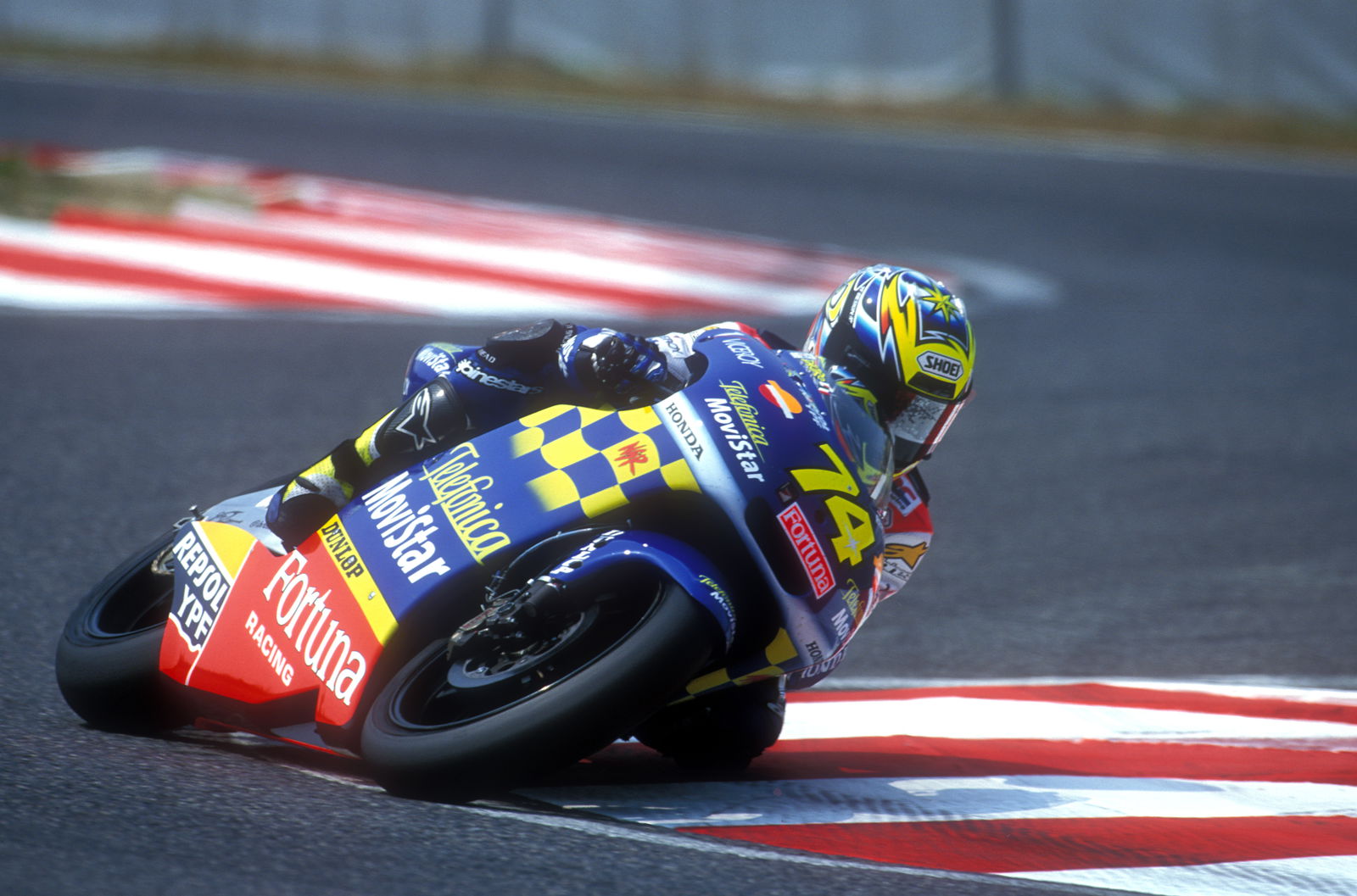
Honda’s relationship with the late Kato - who tragically died at the 2003 Japanese Grand Prix at Suzuka, riding a Honda RC211V - was one of many, in the respect that it was Honda working with one of the best riders in the world. The list is illustrious, to say the least, with Freddie Spencer - who became the first and so far only rider to win both the premier and intermediate (500cc and 250cc at the time) titles in the same year in 1983 - among it, along with his American compatriot Eddie Lawson. Mick Doohan’s Grand Prix adventure with Honda began in 1988, and ended in early retirement 10 years later, but in those 10 years Doohan had won five back-to-back 500cc world titles and 54 Grands Prix. Wayne Gardner is another motorcycling legend to have won with Honda, as was Alex Criville, whose 1999 premier class title was the first for his home nation, Spain, which now dominates the Grand Prix scene. It has done so with riders such as Marc Marquez, who won six titles in his first seven years of premier class racing with HRC, and Dani Pedrosa, who won 54 Grands Prix with Honda in all classes before his retirement from full-time racing in 2018.
Honda may have been in a difficult period of its racing history in the last year or two, but its impact on the World Championship has lasted for over 60 years, a period in which it has become the most successful manufacturer in the championship’s entire history, with 72 titles overall (including 25 premier class titles), and 313 premier class victories.
Kenny Roberts’ first 500cc win: 1978 Austrian 500cc Grand Prix
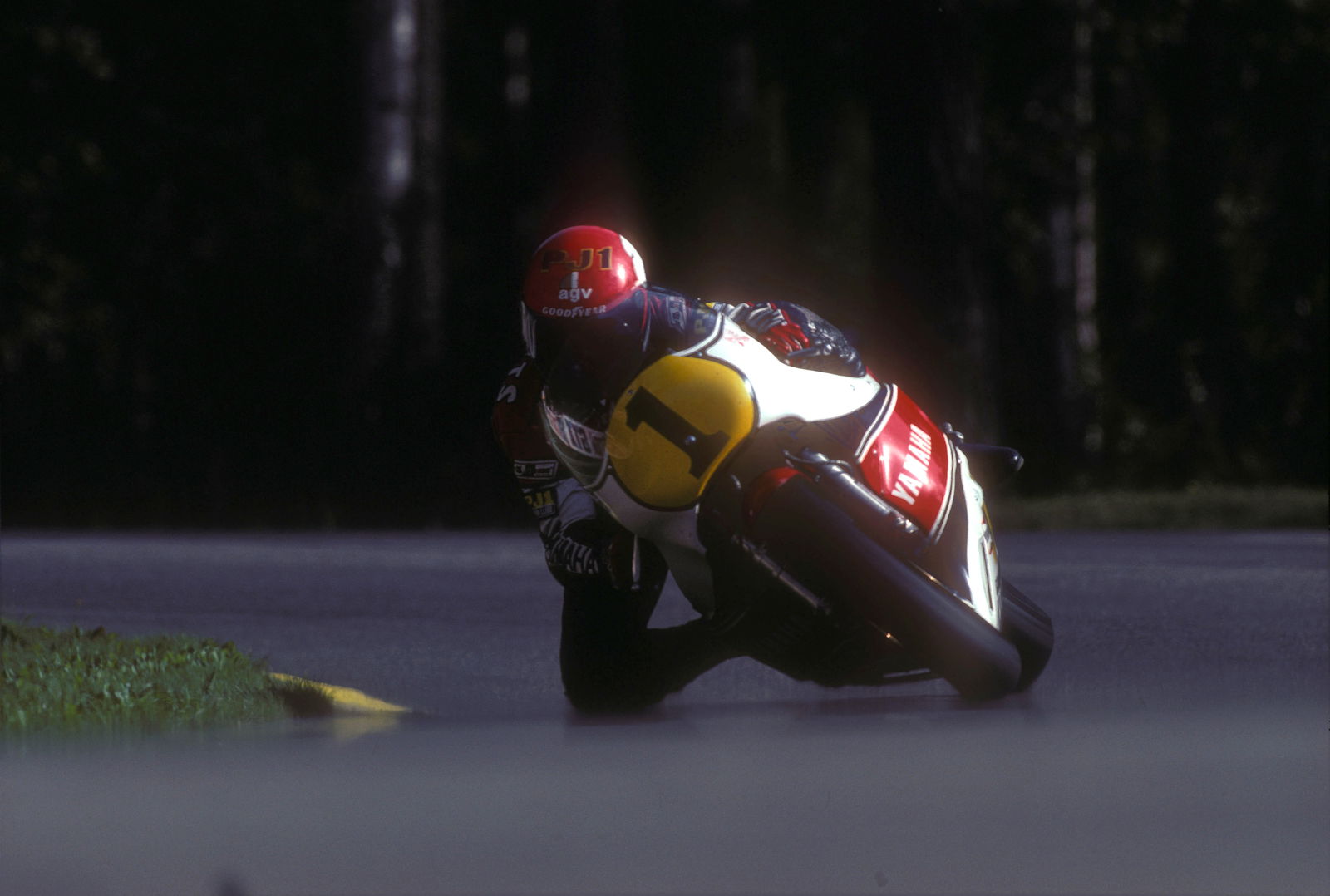
While many American riders made their Grand Prix history with Honda - from Freddie Spencer to Nicky Hayden - the original American hero in the World Championship made his with Yamaha.
Kenny Roberts made his first Grand Prix appearance at the 1974 250cc Dutch TT, and finished third. But it was another four years before Roberts became a permanent member of the Grand Prix grid.
In 1978, Roberts began in the 250cc class again, winning the Venezuelan GP in what was only his second Grand Prix start. He promptly added the 500cc class to his duties for the second round in Spain, where the American was second in both the 500cc and 250cc races. That year’s Dutch TT was the last time Roberts ever raced in the 250cc class. Although he won that race, he arrived in the Netherlands on the back of three straight 500cc wins, a run kicked off at the Austrian Grand Prix which was the third round of 11 that year.
The Austrian performance was a dominating one from Roberts, who won by 16 seconds ahead of his factory Yamaha teammate, Johnny Cecotto, while Barry Sheene - who had won the previous two 500cc titles - was a huge 46 seconds adrift of Roberts after 49 minutes of racing.
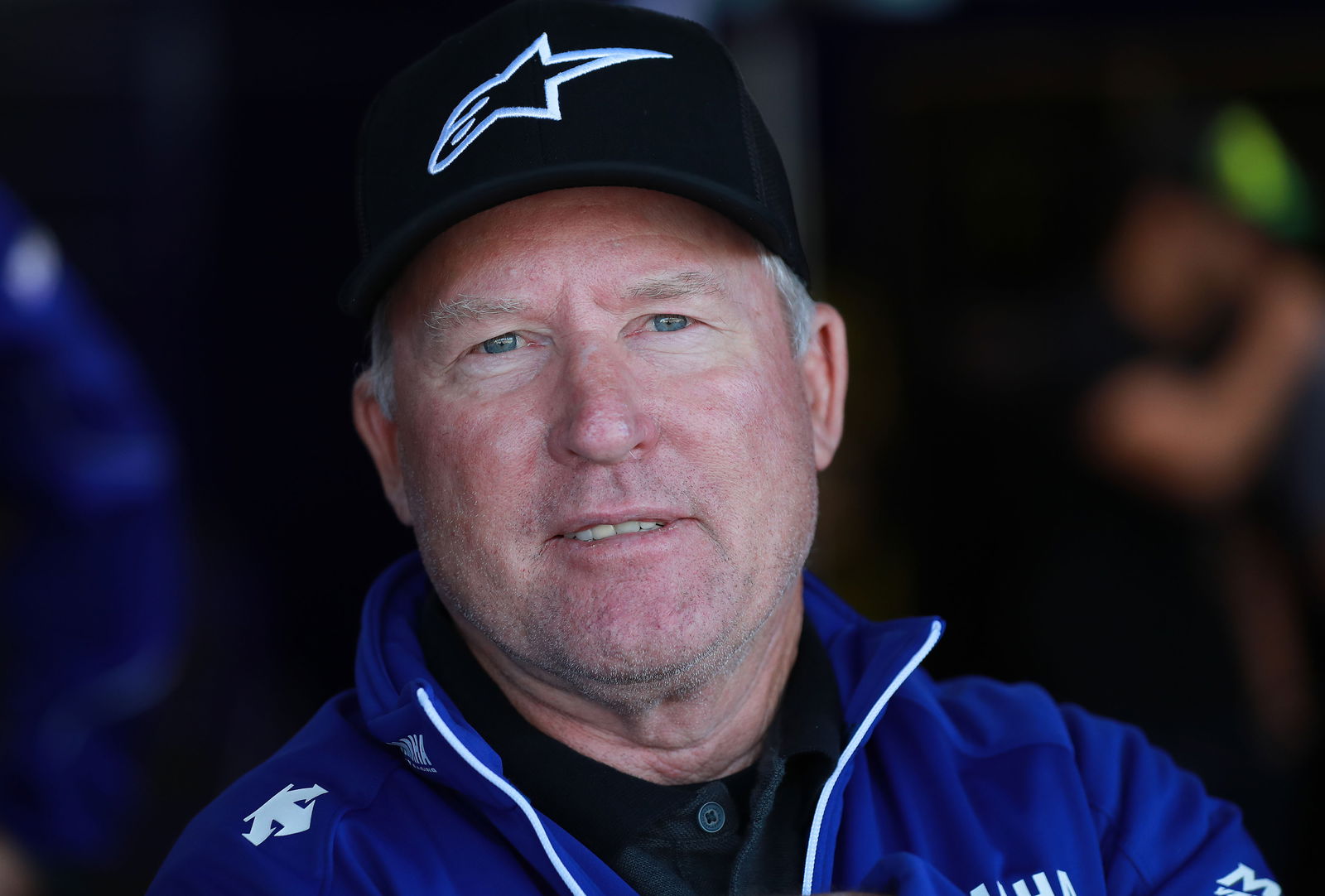
It was a victory which would begin Roberts’ run to an era-beginning first world title. Roberts was on the podium in all but two races that year. The exceptions were Finland, where he retired, and Sweden where he was seventh.
A second title followed in 1979, and a third in 1980, and it began an era of the World Championship that was, at least in the premier class, dominated by America.
Although Marco Ubbiali and Franco Uncini made it back-to-back titles for Italy in 1981 and 1982, respectively, Freddie Spencer put the US back on top in 1983 to resume an era of American dominance that was broken only by the two aforementioned Italians and Wayne Gardner who won in 1987. Other than those three years, American riders won the 500cc World Championship in every year from Roberts’ first in 1978 until Kevin Schwantz won in 1993.
The reason, or at least one of many reasons, for the American dominance was the origins of their riding, which could be traced to Roberts' beginnings, too. Growing up racing dirt track, the Americans were comfortable with the rear wheel sliding, and they learned to use the slip of the rear tyre to turn the bike. This control not only helped them achieve better lap times, it also made them more comfortable in an age of 500cc two-stroke savagery in the World Championship, where a comfort in sliding and an ability to control the throttle were two of the major keys to success.
Now, part of the aforementioned dominance of Spanish riders is their affinity with the dirt. Flat track is a discipline in which the likes of Marc Marquez train intensively, and has been a key part of the programme of Valentino Rossi and the VR46 Riders Academy since 2014.
Valentino Rossi’s debut: 1996 125cc Malaysian Grand Prix
The impact Valentino Rossi has had on not only MotoGP or motorcycle racing, but motorcycling as a whole, is undoubtable. Through success and personality, Rossi was able to bring motorcycling as close as it will probably ever be to ‘mainstream’.
But it all started on 31 March 1996 at the Shah Alam circuit in Malaysia, where Rossi made his World Championship debut in the 125cc class for Aprilia. The #46 finished a creditable sixth, seven seconds behind winner Stefano Perugini. Later in 1996, Rossi would take a famous win in Brno in a battle with Jorge ‘Aspar’ Martinez, and would go on to win a total 115 Grands Prix by the Dutch TT in 2017 which saw his final trip to the top step.
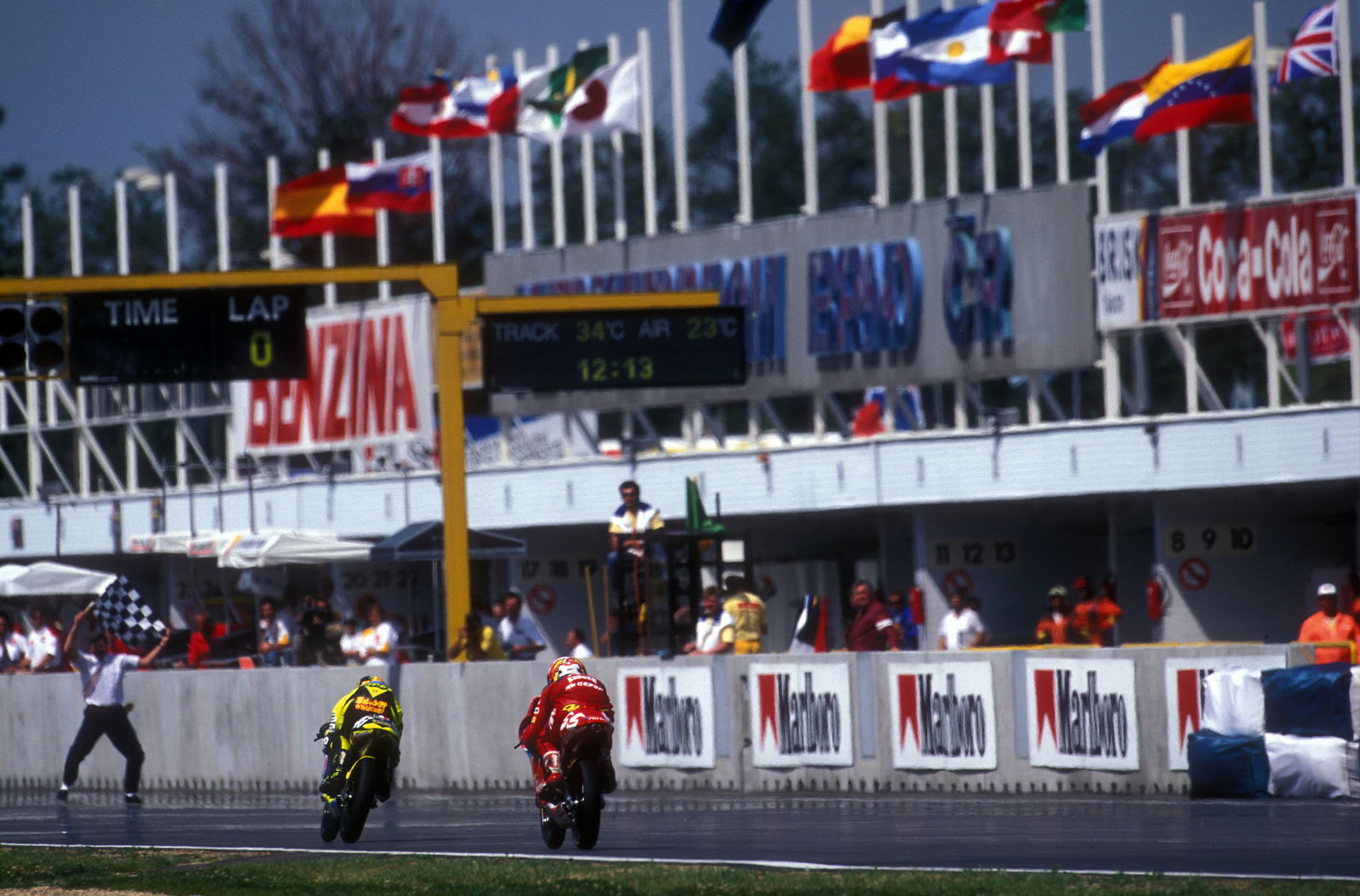
Retiring at the end of 2021, Rossi had competed in Grand Prix racing for 25 consecutive years and 26 seasons, including 22 seasons in the premier class. He was the final rider to win a 500cc World Championship in 2001, and the first rider to win a MotoGP race and title at the 2002 Japanese Grand Prix and 2002 Rio Grand Prix, respectively.
Rossi’s career was more or less unrivalled, accounting for both successes on an off the race track, but it all started with a sixth place in Malaysia in 1996.
Revolution: 2002 MotoGP Japanese Grand Prix
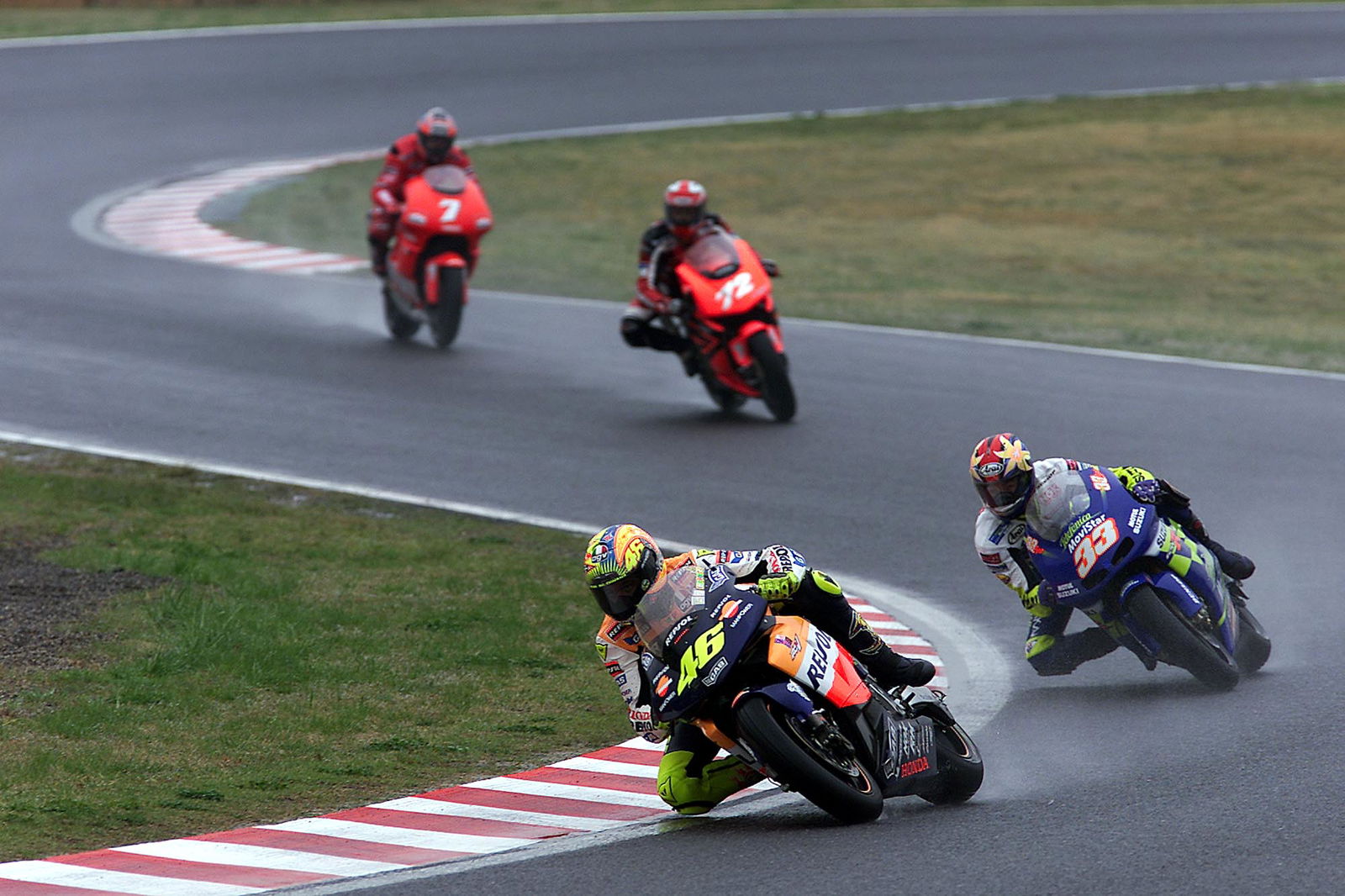
Although we said at the top of this that these aren’t ranked in order of importance, this one is perhaps the most significant moment, with the possible exception of the 1949 Isle of Man TT.
The 2001 Motorcycle World Championship ended on 3 November at the Rio de Janeiro Grand Prix in Brazil, and with it ended a monumental era. Since the 1970s, the premier 500cc class had been dominated by two-strokes, but in a bid to keep manufacturers interested in the championship amid worries of two-stroke killing emissions laws in the late-1990s and early-2000s, Dorna - which had acquired the commercial rights to MotoGP from the 1992 season - and the FIM organised regulations that would bring in larger-capacity, four-stroke bikes from 2002.
Initially, for 2002, two-strokes were still allowed, and the initial anticipation was that it would be a close-run competition between the old bikes and the new 990cc four-strokes, because the theory behind the capacity limit for the four-stroke bikes was that two-strokes produce double the power-per-displacement as a four-stroke.
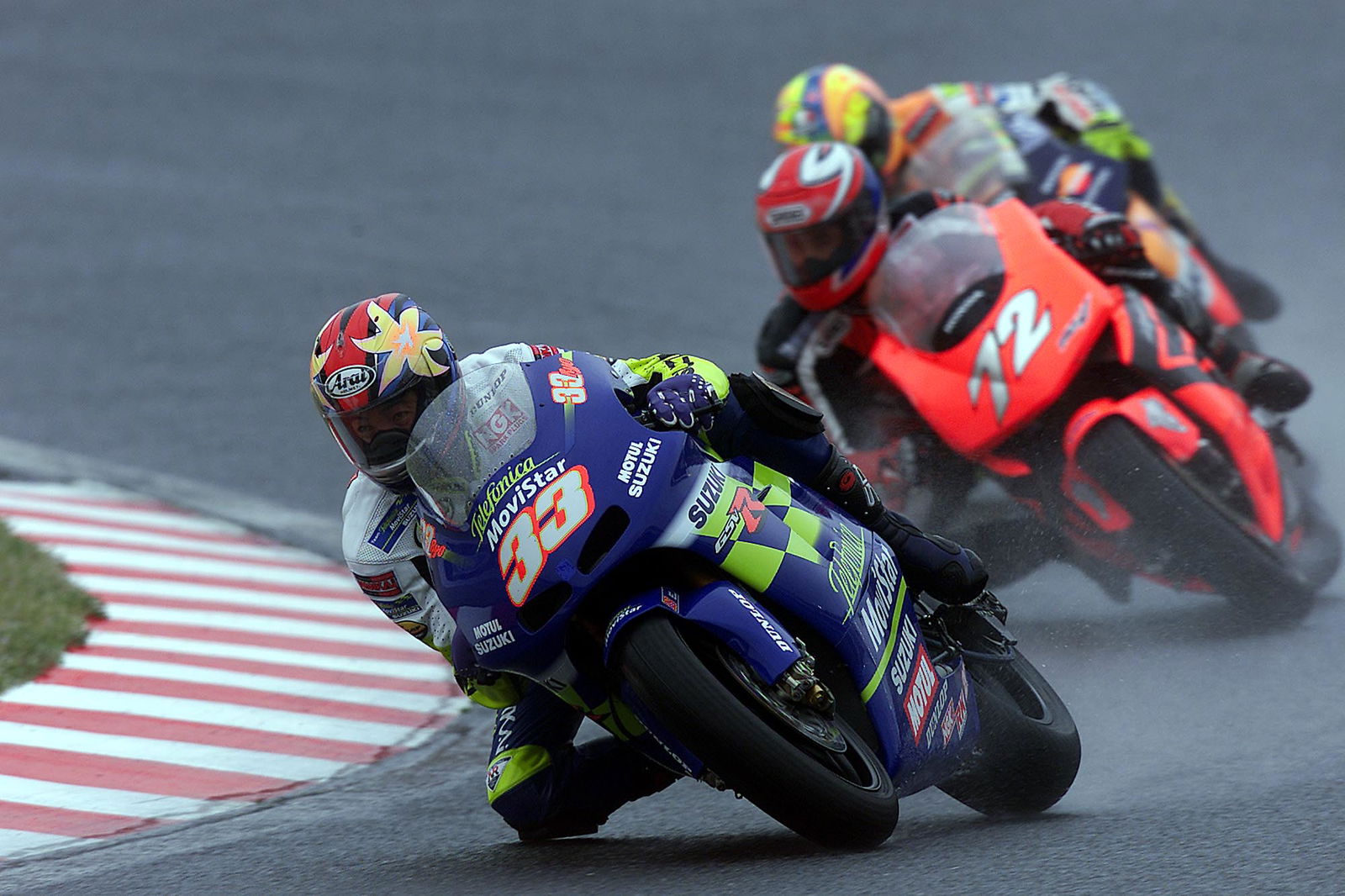
In reality, this did not turn out to be the case. The MotoGP podium at the first race in Suzuka was dominated by 990s, with Valentino Rossi winning on debut for the Repsol Honda Team and HRC’s magnificent V5 RC211V, and he was joined on the podium by Suzuki's Akira Ryo and Yamaha's Carlos Checa.
Rossi would go on to dominate the championship that year (and for a number of years after that, for that matter), and the closest the the 500s got to winning a race in 2002 was at the German Grand Prix. There, Alex Barros and Olivier Jacque were fighting for victory, but Barros cleaned them both out when trying to overtake the Frenchman at the first corner with three laps to go. That handed Rossi the lead, and ensured the four-strokes continued their winning streak which - in the same way Michelin has won every MotoGP race since 2016 and Triumph every Moto2 race since 2019 - remains unbroken today.
Surely, with Marc Marquez moving from Repsol Honda to Gresini Ducati, Pedro Acosta making his debut in the premier class, and Francesco Bagnaia defending back-to-back MotoGP titles in 2024, the upcoming MotoGP season is set to bring a new selection of moments that will prove to be unforgettable.
